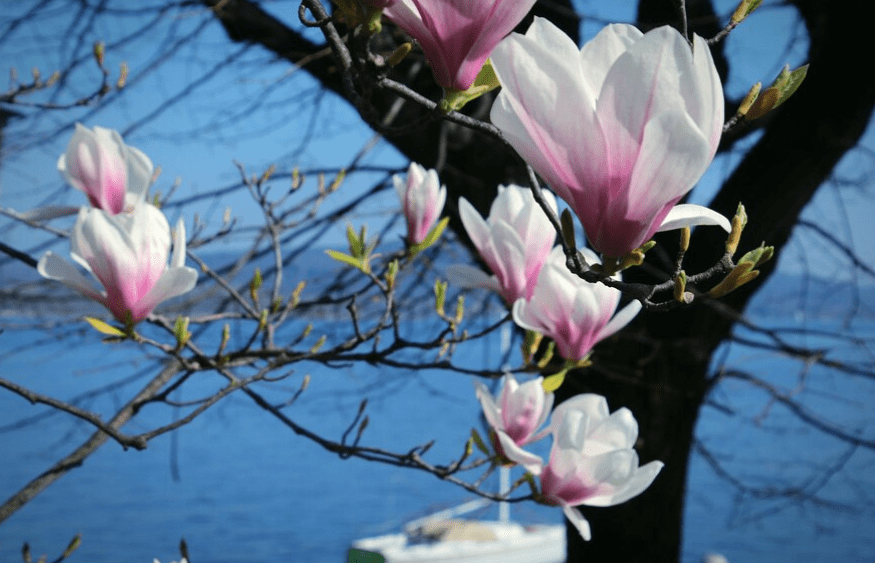
How to Care for Your Magnolia Tree in Winter: Expert Tips for Thriving Blossoms
Proper care for your magnolia tree in winter is essential to ensure it thrives come spring. One important aspect of caring for your magnolia tree in winter is pruning. It’s best to prune your magnolia tree in late winter or early spring, before the new growth begins. This will help promote healthy growth and beautiful blossoms. Additionally, it’s important to protect your magnolia tree from harsh winter weather, such as strong winds and heavy snow. You can do this by wrapping the tree in burlap or using a protective covering. Finally, providing the necessary nutrients, such as a balanced fertilizer, will help ensure that your magnolia tree has the energy it needs to bloom beautifully in the spring. By taking these steps to care for your magnolia tree in winter, you can help it thrive and bring joy to your garden in the spring.
Table of Contents
ToggleUnderstanding Magnolia Trees
Magnolia trees are known for their beautiful, large flowers and glossy green leaves. One important aspect of caring for your magnolia tree in winter is pruning. It’s best to prune your magnolia tree in late winter or early spring, before the new growth begins. This will help promote healthy growth and beautiful blossoms. Additionally, it’s important to protect your magnolia tree from harsh winter weather, such as strong winds and heavy snow. You can do this by wrapping the tree in burlap or using a protective covering. Finally, providing the necessary nutrients, such as a balanced fertilizer, will help ensure that your magnolia tree has the energy it needs to bloom beautifully in the spring. By taking these steps to care for your magnolia tree in winter, you can help it thrive and bring joy to your garden in the spring.
Overview of magnolia tree varieties and their characteristics.
There are many different varieties of magnolia trees, each with its own unique characteristics. Some popular varieties include the Southern magnolia, which has large, fragrant white flowers and glossy green leaves. The Saucer magnolia, known for its large, showy pink or white flowers that bloom in early spring. The Star magnolia, with delicate, star-shaped white flowers that bloom in early spring. The Jane magnolia, which has large, purple flowers that bloom in late spring. And the Little Gem magnolia, a smaller variety with compact growth and glossy green leaves. Each variety has its own unique beauty and characteristics, making them a popular choice for gardeners and landscapers. Whether you’re looking for a bold statement tree or a more subtle addition to your garden, there’s a magnolia tree variety that’s perfect for you.
Importance of seasonal care for magnolia trees.
Magnolia trees are beautiful and add a touch of elegance to any landscape. It’s important to provide seasonal care for magnolia trees to ensure their health and beauty. During the spring and summer months, it’s important to water the tree regularly, especially during dry periods. Mulching around the base of the tree can help retain moisture and regulate the soil temperature. Pruning should be done in late spring or early summer to remove dead or damaged branches and shape the tree. In the fall, it’s important to fertilize the tree to provide nutrients for healthy growth in the following year. Additionally, it’s important to protect the tree from harsh winter conditions by wrapping the trunk and covering the base with mulch. By providing seasonal care for magnolia trees, you can ensure that they thrive and continue to enhance the beauty of your landscape.
The Impact of Winter on Magnolia Trees
Explanation of how winter conditions affect magnolia trees.
Magnolia trees are beautiful and add a touch of elegance to any landscape. It’s important to provide seasonal care for magnolia trees to ensure their health and beauty. During the spring and summer months, it’s important to water the tree regularly, especially during dry periods. Mulching around the base of the tree can help retain moisture and regulate the soil temperature. Pruning should be done in late spring or early summer to remove dead or damaged branches and shape the tree. In the fall, it’s important to fertilize the tree to provide nutrients for healthy growth in the following year. Additionally, it’s important to protect the tree from harsh winter conditions by wrapping the trunk and covering the base with mulch. The winter can have a significant impact on magnolia trees. Cold temperatures and strong winds can damage the buds and flowers, leading to a reduction in bloom the following spring. Additionally, freezing temperatures can cause damage to the branches and trunk of the tree, leading to dieback and decreased health. It’s important to take steps to protect the tree from these harsh winter conditions in order to ensure its continued health and beauty. By providing seasonal care for magnolia trees, you can ensure that they thrive and continue to enhance the beauty of your landscape.
Common winter challenges for magnolia trees (e.g., frost, wind, reduced sunlight).
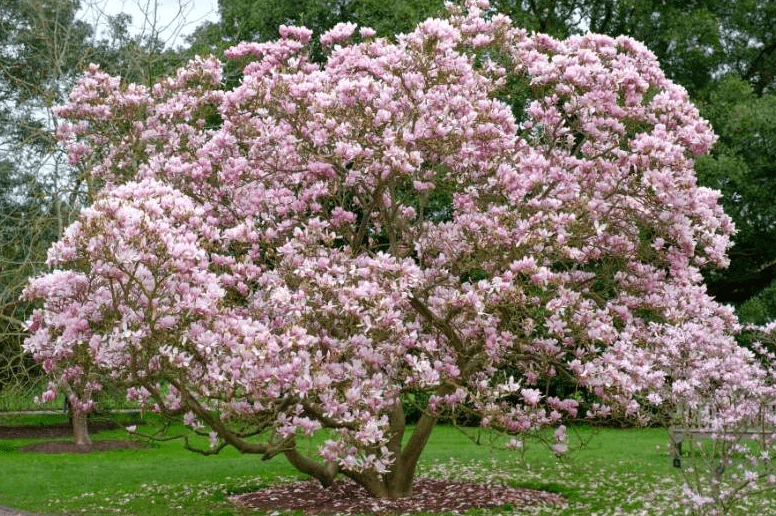
During the winter, magnolia trees face several challenges that can impact their health and growth. One common challenge is frost, which can damage the buds and flowers of the tree, leading to reduced bloom in the spring. Additionally, strong winds during the winter months can cause damage to the branches and trunk of the tree, impacting its overall health. Furthermore, the reduced sunlight during the winter months can also affect the tree’s ability to photosynthesize and produce energy. In order to help magnolia trees thrive during the winter, it’s important to take proactive measures. This can include pruning in late spring or early summer to remove dead or damaged branches and shape the tree. In the fall, it’s important to fertilize the tree to provide nutrients for healthy growth in the following year. Additionally, it’s important to protect the tree from harsh winter conditions by wrapping the trunk and covering the base with mulch. By providing seasonal care for magnolia trees, you can ensure that they thrive and continue to enhance the beauty of your landscape.
Preparing Your Magnolia Tree for Winter
Steps to take before winter arrives:
Pruning: Timing and techniques for winter pruning.
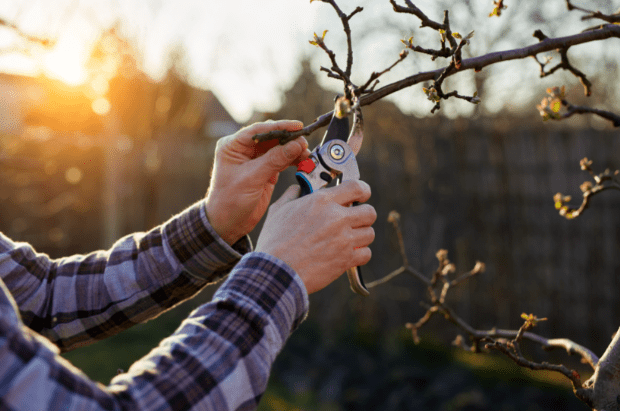
One common challenge for magnolia trees in the winter is frost, which can damage the buds and flowers, leading to reduced bloom in the spring. Additionally, strong winds and reduced sunlight during the winter months can also impact the tree’s health. To help your magnolia tree thrive during the winter, it’s important to take proactive measures. This includes pruning in late spring or early summer to remove dead or damaged branches and shape the tree. In the fall, it’s important to fertilize the tree to provide nutrients for healthy growth in the following year. Additionally, protecting the tree from harsh winter conditions by wrapping the trunk and covering the base with mulch can help. By providing seasonal care for magnolia trees, you can ensure that they thrive and continue to enhance the beauty of your landscape.
Mulching: Benefits and proper application of mulch around the tree base.
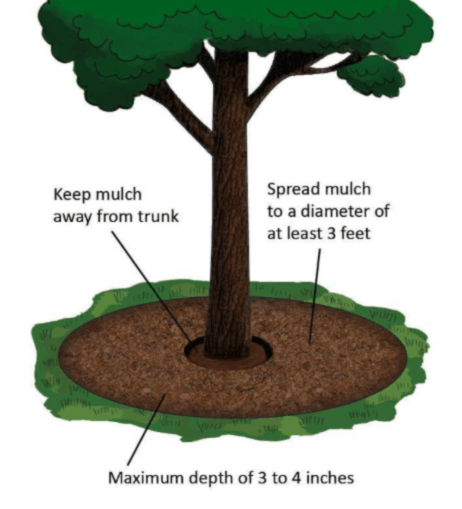
Mulching around the base of your trees, including magnolia trees, offers several benefits. Mulch helps to retain soil moisture, regulate soil temperature, and suppress weed growth. It also provides a protective barrier around the tree’s base, which helps to prevent damage from mowers and trimmers. When applying mulch around your magnolia tree, be sure to spread it in a donut shape, leaving a few inches of space around the trunk. This prevents the mulch from piling up against the tree and causing rot. Use organic mulch, such as wood chips or shredded leaves, and apply it to a depth of 2-4 inches. Be sure to replenish the mulch annually to maintain its benefits. Following proper mulching techniques can help your magnolia tree to thrive and continue to enhance the beauty of your landscape.
Fertilization: Appropriate winter fertilization practices.
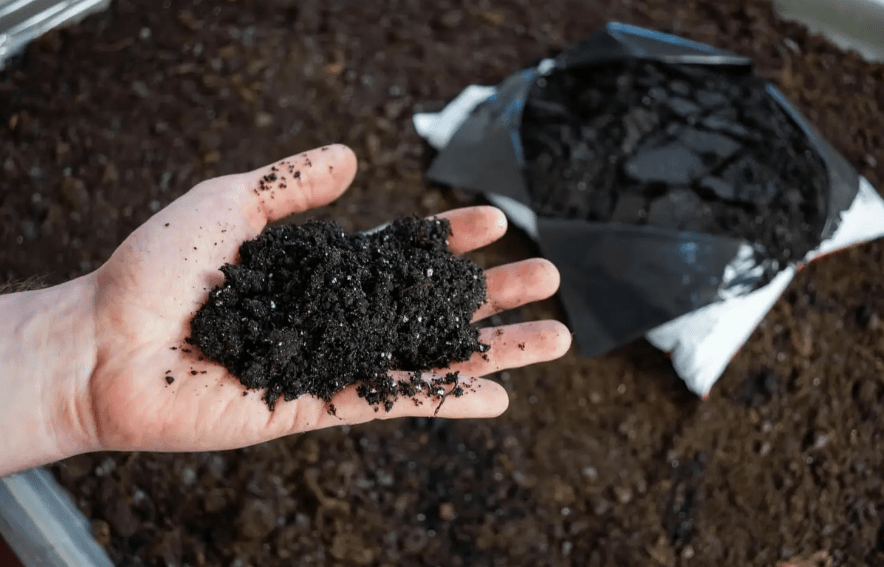
During the winter, it’s important to practice appropriate fertilization techniques to ensure the health and growth of your plants, including trees like magnolias. Applying fertilizer in the winter can help to provide essential nutrients to the soil and promote strong root development. It’s important to choose a slow-release fertilizer specifically formulated for trees and shrubs, and to apply it according to the manufacturer’s instructions. Be sure to water the area thoroughly after applying the fertilizer to help it penetrate the soil. Additionally, it’s beneficial to avoid fertilizing when the ground is frozen or covered in snow, as this can prevent the fertilizer from being absorbed properly. By following these winter fertilization practices, you can help your magnolia and other trees to thrive and prepare for healthy growth in the upcoming spring.
Protecting Magnolia Trees from Winter Damage
Identifying potential winter threats (e.g., frost, wind, pests).
During the winter, it’s important to protect your magnolia trees from potential threats such as frost, wind, and pests. Frost can damage the delicate leaves and flowers of the magnolia tree, so it’s important to cover the tree with a frost cloth or blanket on nights when frost is expected. Additionally, strong winter winds can cause branches to break, so it’s important to secure the tree with stakes or ties to prevent damage. Keep an eye out for pests such as scale insects and aphids, which can infest magnolia trees during the winter months. Using horticultural oil or insecticidal soap can help to prevent and treat pest infestations. By identifying these potential threats and taking appropriate measures to protect your magnolia tree, you can help ensure its health and vitality throughout the winter season.
Methods to protect magnolia trees from winter damage:
Frost Protection: Using covers, wraps, and anti-desiccant sprays.
When it comes to protecting your magnolia trees from winter damage, there are a few methods you can use. One important method is frost protection. You can use covers, wraps, and anti-desiccant sprays to protect the delicate leaves and flowers of the magnolia tree from frost. Additionally, it’s important to avoid fertilizing when the ground is frozen or covered in snow, as this can prevent the fertilizer from being absorbed properly. By following these winter fertilization practices and using protective methods, you can help your magnolia and other trees to thrive and prepare for healthy growth in the upcoming spring.
Wind Protection: Installing windbreaks or barriers.
When it comes to protecting your magnolia trees from winter damage, it’s important to consider wind protection. Installing windbreaks or barriers can help protect your trees from strong winter winds that can cause damage to the branches and leaves. This can also help prevent desiccation, or the drying out of the tree, which can occur when exposed to harsh winds. By providing wind protection, you can help maintain the health and vitality of your magnolia tree during the winter months. Additionally, be sure to keep an eye out for pests such as scale insects and aphids, which can infest magnolia trees during the winter. Using horticultural oil or insecticidal soap can help prevent and treat pest infestations, further protecting your tree from damage. By taking these measures, you can help ensure the health and beauty of your magnolia tree throughout the winter season.
Pest Control: Monitoring and managing common winter pests.
It is important to monitor and manage common winter pests to protect your trees and plants. During the winter months, pests such as scale insects and aphids can infest trees like magnolias. It is important to keep an eye out for any signs of infestation and take action to prevent and treat pest problems. Using horticultural oil or insecticidal soap can help control and manage these pests, protecting your trees from damage. Additionally, installing windbreaks or barriers can help protect trees from strong winter winds that can cause damage to the branches and leaves. By taking these measures, you can ensure the health and vitality of your trees during the winter season.
Watering Magnolia Trees in Winter

is crucial for their health and survival. While magnolia trees are generally hardy, they still need to be watered during the winter months, especially if there is a lack of rainfall. It’s important to check the soil moisture around the tree and water it if the soil is dry. This will help to prevent the tree from drying out and becoming stressed during the winter. It’s also important to water the tree early in the day so that the water has time to soak into the soil before temperatures drop at night. However, be careful not to overwater, as this can lead to root rot. Overall, providing the right amount of water to your magnolia trees during the winter months will help ensure their health and vitality.
Monitoring Magnolia Tree Health in Winter
Regular inspections for signs of stress or disease.
During the winter months, it’s important to monitor the health of your magnolia trees. Regular inspections for signs of stress or disease are crucial in ensuring the trees remain healthy and strong. Look for any signs of wilting, discoloration, or abnormal growth on the branches and leaves. Additionally, installing windbreaks or barriers can help protect trees from strong winter winds that can cause damage to the branches and leaves. By taking these measures, you can ensure the health and vitality of your trees during the winter season. Furthermore, watering magnolia trees in winter is crucial for their health and survival. While magnolia trees are generally hardy, they still need to be watered during the winter months, especially if there is a lack of rainfall. It’s important to check the soil moisture around the tree and water it if the soil is dry. This will help to prevent the tree from drying out and becoming stressed during the winter. It’s also important to water the tree early in the day so that the water has time to soak into the soil before temperatures drop at night. However, be careful not to overwater, as this can lead to root rot. Overall, providing the right amount of water to your magnolia trees during the winter months will help ensure their health and vitality.
Common winter diseases and how to manage them.
During the winter months, trees are vulnerable to a variety of diseases that can affect their health and survival. Some common winter diseases that affect trees include frost cracks, snow mold, and ice damage. To manage these diseases, it’s important to take preventative measures such as wrapping the trunks of young trees to protect them from frost cracks, avoiding excessive fertilization to prevent snow mold, and removing ice and snow buildup from tree branches to prevent damage. Proper pruning and maintenance can also help to prevent the spread of diseases and promote the overall health of your trees during the winter. Additionally, it’s important to monitor the moisture levels of the soil and provide the necessary water to your trees, especially during dry winter months. By taking these measures, you can ensure the health and vitality of your trees during the winter season.
Tools and techniques for effective monitoring.
There are several tools and techniques that can help you effectively monitor the health and vitality of your trees during the winter months. One useful tool is a soil moisture meter, which can help you track the moisture levels of the soil around your trees and ensure they are getting the right amount of water. Additionally, using a tree wrap can help protect the trunks of young trees from frost cracks, while regular pruning and maintenance can help prevent the spread of diseases and promote overall tree health. It’s also important to regularly inspect your trees for any signs of disease or damage, and to remove any ice or snow buildup from branches to prevent damage. By using these tools and techniques for effective monitoring, you can ensure the health and vitality of your trees during the winter season.
Pruning and Shaping Magnolia Trees in Winter
Detailed guide on winter pruning practices.
Pruning and shaping magnolia trees in winter is an important part of tree care. Winter is the best time to prune magnolia trees because they are dormant and it allows for better visibility of the tree’s structure. The first step is to remove any dead, diseased, or broken branches. This will help improve the overall health and appearance of the tree. Next, you can remove any crossing branches that could potentially rub against each other and cause damage. It’s important to make clean cuts and avoid leaving stubs, as this can lead to decay. When shaping the tree, you can remove any unwanted growth to create a more balanced and aesthetically pleasing appearance. However, it’s important to avoid over-pruning, as this can stress the tree and affect its growth. Overall, winter pruning practices for magnolia trees are essential for maintaining their health and appearance.
Benefits of winter pruning for magnolia trees.
Pruning magnolia trees in the winter has several benefits. First, the tree is dormant during the winter, which makes it an ideal time for pruning as the tree is not actively growing. This allows for better visibility of the tree’s structure, making it easier to identify which branches need to be pruned. Additionally, winter pruning helps improve the overall health and appearance of the tree by removing any dead, diseased, or broken branches. This also promotes new growth in the spring. Pruning in the winter also allows for shaping the tree by removing any unwanted growth, creating a more balanced and aesthetically pleasing appearance. It’s important to make clean cuts and avoid leaving stubs, as this can lead to decay and disease. However, it’s important to avoid over-pruning, as this can stress the tree and affect its growth. Overall, winter pruning practices for magnolia trees are essential for maintaining their health and appearance.
Step-by-step instructions for safe and effective pruning.
Pruning your trees is an important part of maintaining their health and appearance. To ensure safe and effective pruning, it’s important to follow these step-by-step instructions. First, make sure to prune your tree during the winter when it is dormant. This allows for better visibility of the tree’s structure and helps to identify which branches need to be pruned. It also promotes new growth in the spring. When pruning, start by removing any dead, diseased, or broken branches to improve the overall health and appearance of the tree. Next, you can shape the tree by removing any unwanted growth to create a more balanced and aesthetically pleasing appearance. It’s important to make clean cuts and avoid leaving stubs, as this can lead to decay and disease. However, be mindful not to over-prune, as this can stress the tree and affect its growth. Overall, following these steps will help ensure safe and effective pruning for your trees.
Enhancing Soil Health During Winter
is crucial for maintaining a healthy and productive garden. One way to do this is by adding organic matter to the soil, such as compost or mulch, to improve its structure and nutrient content. Another important step is to cover the soil with a layer of mulch to protect it from erosion and temperature fluctuations. Additionally, planting cover crops can help prevent soil erosion and add nutrients to the soil. It’s also a good idea to test the soil pH and adjust it as needed to create the best growing conditions for your plants. By taking these steps to enhance soil health during winter, you can set the stage for a successful and bountiful garden in the spring.
Preparing for Spring Growth
is essential for a successful garden. One important aspect of this preparation is pruning. It’s important to make clean cuts and avoid leaving stubs, as this can lead to decay and disease. However, be mindful not to over-prune, as this can stress the tree and affect its growth. Overall, following these steps will help ensure safe and effective pruning for your trees.
Another crucial aspect of preparing for spring growth is enhancing soil health during the winter months. Adding organic matter to the soil, such as compost or mulch, can improve its structure and nutrient content. Covering the soil with a layer of mulch can protect it from erosion and temperature fluctuations. Planting cover crops can also help prevent soil erosion and add nutrients to the soil. It’s also important to test the soil pH and adjust it as needed to create the best growing conditions for your plants.
By taking these steps to enhance soil health during winter, you can set the stage for a successful and bountiful garden in the spring. So, make sure to prepare your garden and trees for spring growth by following these important guidelines.
In conclusion, caring for your magnolia tree in the winter is crucial for its overall health and the beauty of its blossoms in the spring. Proper pruning, protection from harsh weather, and providing adequate moisture are essential for ensuring your magnolia tree thrives. By following these expert tips, you can help your magnolia tree stay healthy and produce stunning blossoms year after year.
Frequently asked questions And Answer
To protect your magnolia tree from frost and cold temperatures, you can cover it with a frost cloth or burlap to provide insulation. You can also mulch around the base of the tree to help retain soil warmth.
It’s important to water your magnolia tree during the winter, especially if there is a lack of natural precipitation. Make sure to water deeply to encourage strong root growth.
To prevent winter damage to your magnolia tree’s branches, avoid pruning in the fall, as this can stimulate new growth that is susceptible to winter damage. Additionally, you can gently shake off any accumulated snow to prevent the weight from causing branches to break.
It’s best to avoid fertilizing your magnolia tree in the winter, as this can stimulate new growth that may be damaged by cold temperatures. Wait until the spring to apply fertilizer.
To ensure that your magnolia tree blooms in the spring after winter, make sure to provide proper care during the winter months, including protection from frost, adequate watering, and avoiding pruning. This will help the tree conserve energy and be ready to produce beautiful blossoms in the spring.

